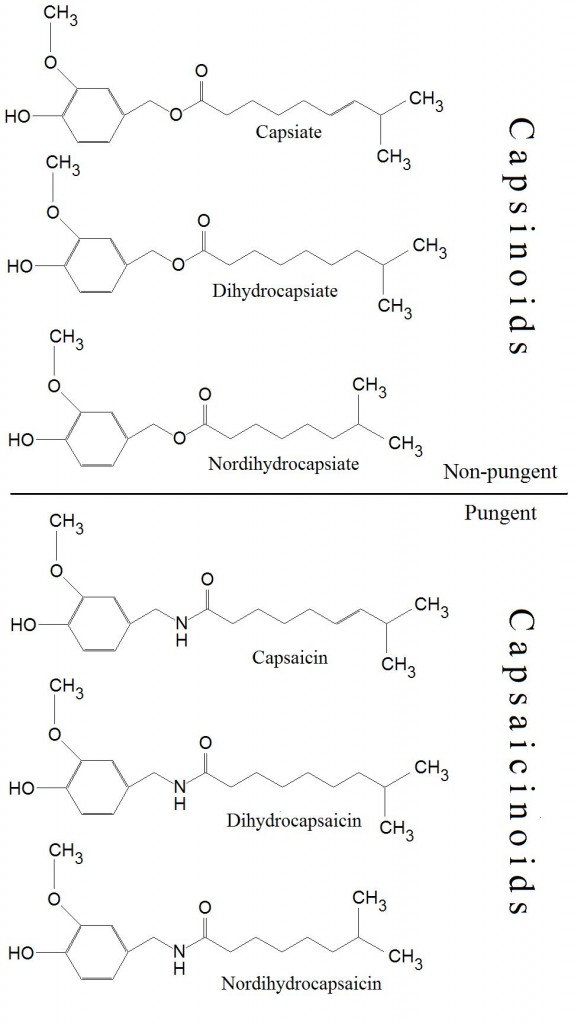Obesity is characterised by a reduction in insulin sensitivity. One of the main problems associated with this insulin resistance is an inability to efficiently oxidise fatty acids in skeletal muscle, something which significantly lowers energy expenditure. Capsinoids are a group of compounds found in red peppers that are of interest nutritionally because of their ability to up-regulate fat oxidation. While capsaicin is the main pungent compound in red peppers, capsinoids are non-pungent analogues. In addition, capsinoids are found in a variety of sweet pepper (CH-19 Sweet) which lacks capsaicin. The main capsinoids in CH-19 Sweet are capsiate, dihydrocapsiate and nordihydrocapsiate (figure 1). Although there are non-pungent, capsinoids have been shown to possess a similar ability to increase sympathetic nervous system activity as capsaicin. This increase in sympathetic activity may increase energy expenditure, thermogenesis and fat oxidation, and therefore be of benefit in treating obesity.
 Figure 1. The structure of the capsinoids capsiate, dihydrocapsiate and nordihydrocapsiate, in comparison to the capsaisinoids capsaicin, dihydrocapsaicin and nordihydrocapsaicin.
Figure 1. The structure of the capsinoids capsiate, dihydrocapsiate and nordihydrocapsiate, in comparison to the capsaisinoids capsaicin, dihydrocapsaicin and nordihydrocapsaicin.
To date, many of the studies investigating capsinoids with regard energy expenditure have been performed on rodents, but some humans studies have shown benefits. For example, researchers1 investigated the acute effects of capsinoid ingestion on the energy expenditure of 18 healthy men age 20-32 years using a single blind randomised study. Subjects were exposed to 2 hours of cold exposure (19°C) with minimal clothing. The authors then assessed brown adipose tissue (BAT) activity using [18F]fluorodeoxyglucose-positron emission tomography. Ten of the subjects reacted to cold with an uptake of radio labelled glucose into the supraclavicular and paraspinal region, indicating BAT activation. The BAT positive group had resting energy expenditures (REE) of 1507 kcal/d and the BAT negative group had REE of 1460 kcal/d. Supplementation of 9 mg capsinoids caused energy expenditure to increase by 15.2 and 1.7 % in the BAT positive and BAT negative individuals, respectively.
These results suggest that capsinoids increase energy expenditure in humans by increasing thermogenesis. However, the capsinoid supplementation did not raise skin temperatures in any subjects, which suggests that the effects are subtle. This supports data from rodent studies that also suggest capsinoids are beneficial at improving REE. Rodents have higher proportion of BAT compared to adult humans, but this study suggest that the thermogenic effects of capsinoids transfer from rodent models despite differences in physiology. Interestingly, some individuals responded to cold with increase thermogensis, and these were the individuals who respond more effectively to capsinoid treatment. How this might relate to obesity is not known, but the slight increase in energy expenditure may be beneficial in weight loss. In fact other researchers have tested capsinoids in obese subject and shown a weight loss of 0.9 kg over 12 weeks, compared to 0.5 kg in the control group (here).
RdB
